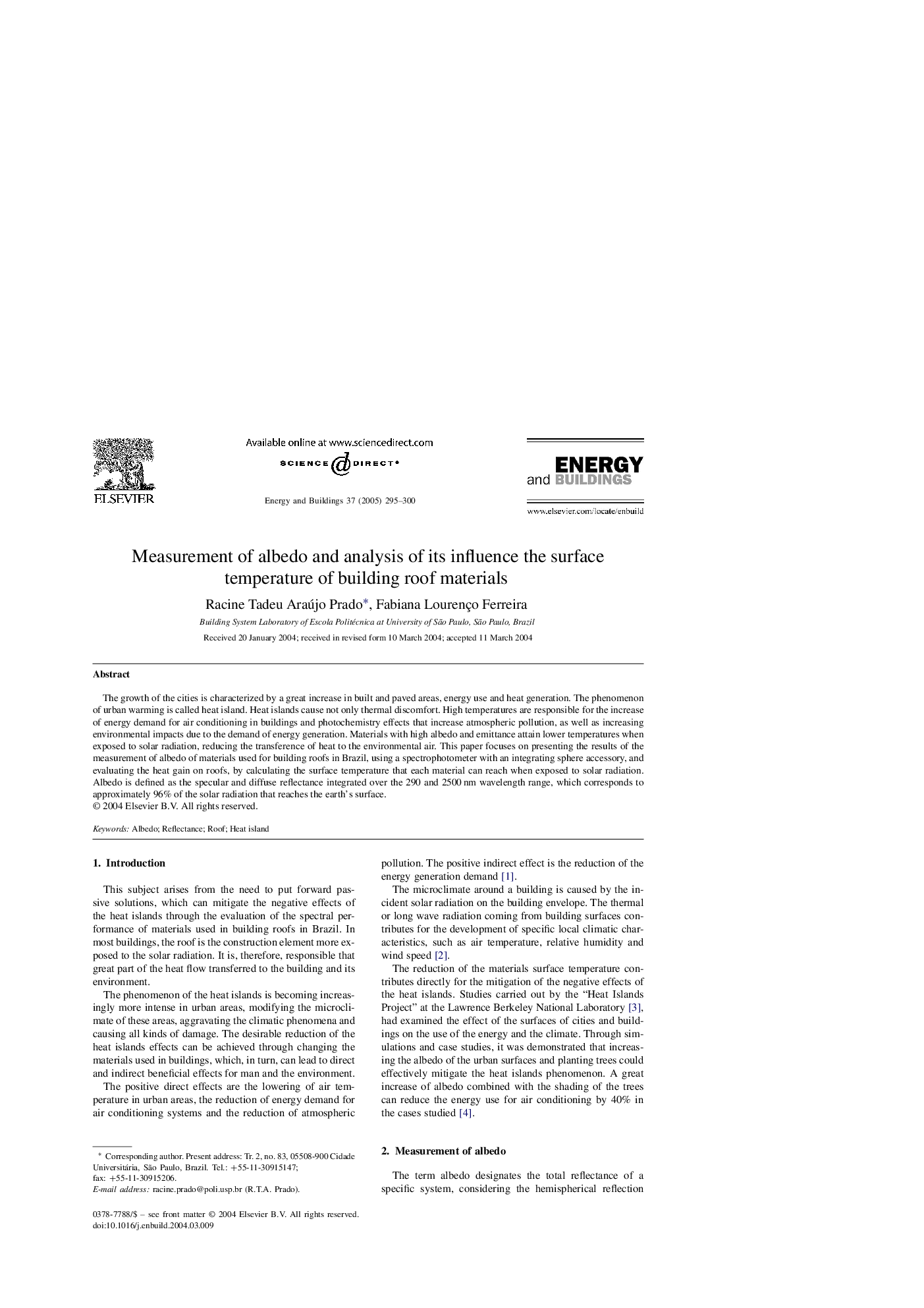| Article ID | Journal | Published Year | Pages | File Type |
|---|---|---|---|---|
| 10286136 | Energy and Buildings | 2005 | 6 Pages |
Abstract
The growth of the cities is characterized by a great increase in built and paved areas, energy use and heat generation. The phenomenon of urban warming is called heat island. Heat islands cause not only thermal discomfort. High temperatures are responsible for the increase of energy demand for air conditioning in buildings and photochemistry effects that increase atmospheric pollution, as well as increasing environmental impacts due to the demand of energy generation. Materials with high albedo and emittance attain lower temperatures when exposed to solar radiation, reducing the transference of heat to the environmental air. This paper focuses on presenting the results of the measurement of albedo of materials used for building roofs in Brazil, using a spectrophotometer with an integrating sphere accessory, and evaluating the heat gain on roofs, by calculating the surface temperature that each material can reach when exposed to solar radiation. Albedo is defined as the specular and diffuse reflectance integrated over the 290 and 2500Â nm wavelength range, which corresponds to approximately 96% of the solar radiation that reaches the earth's surface.
Keywords
Related Topics
Physical Sciences and Engineering
Energy
Renewable Energy, Sustainability and the Environment
Authors
Racine Tadeu Araújo Prado, Fabiana Lourenço Ferreira,
